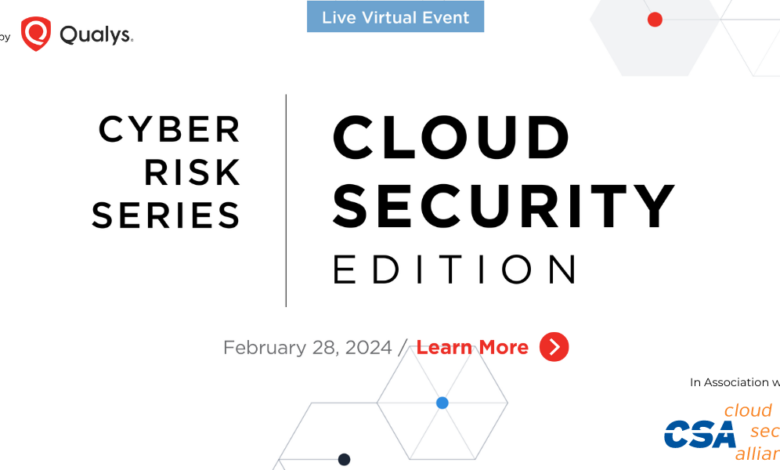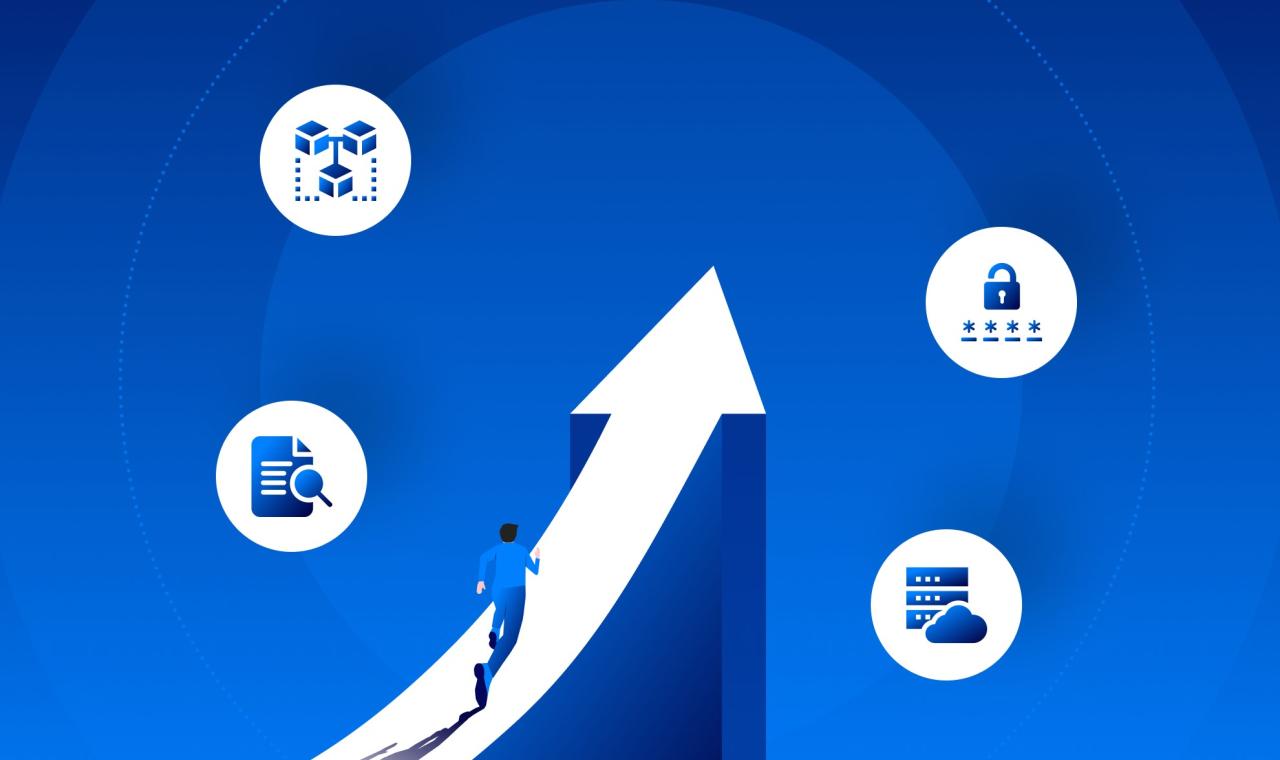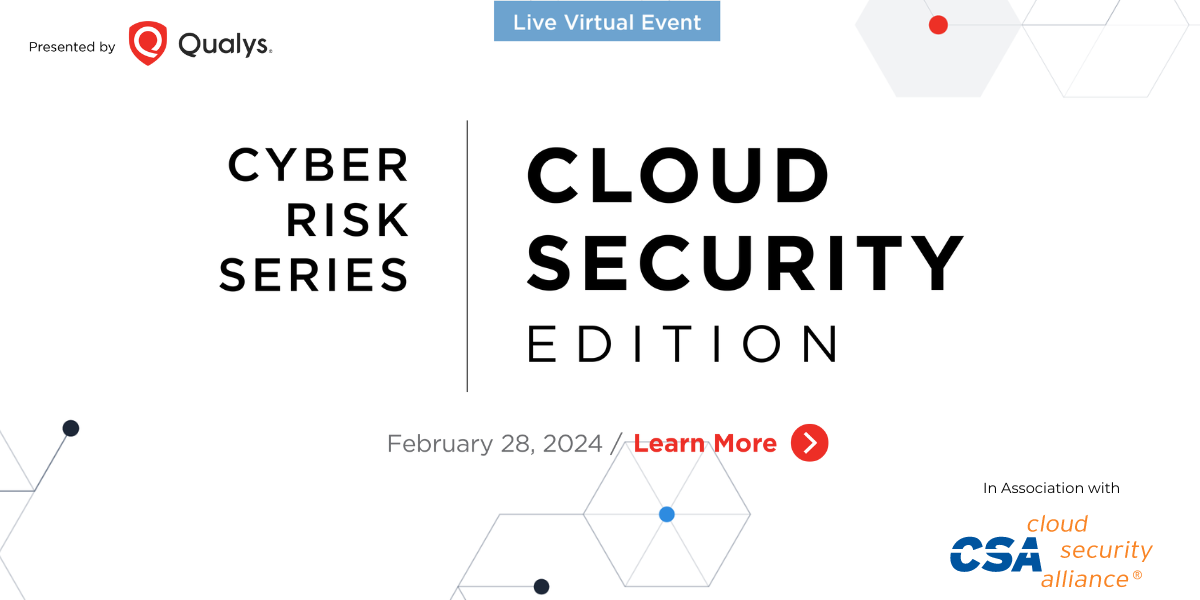
Cloud Security Alliance Releases New Startup Security Practices
Cloud Security Alliance releases newly formulated security practices for startups – that’s huge news for anyone building a business in the cloud! This isn’t just another security checklist; it’s a practical guide tailored to the unique challenges faced by startups. We’re talking about actionable steps, not overwhelming jargon. Think of it as a security roadmap designed to help you navigate the complexities of protecting your data and your business from the very beginning.
Get ready to ditch the guesswork and embrace a more secure future.
The Cloud Security Alliance (CSA), a renowned organization dedicated to improving cloud security, has released a set of new security practices specifically designed for startups. These practices address crucial areas like data protection, infrastructure security, and risk management, providing practical guidance and tools to help young companies build a strong security foundation. The CSA recognizes that startups often face unique challenges in implementing robust security measures due to limited resources and expertise.
Therefore, these new guidelines offer a streamlined approach, focusing on the most critical aspects of cloud security for early-stage businesses. We’ll dive into the specifics, exploring what these practices entail and how they can benefit your startup.
Introduction to the Cloud Security Alliance (CSA) and its role in startup security
The Cloud Security Alliance (CSA) is a not-for-profit organization with a global membership dedicated to defining and raising awareness of best practices for providing security assurance within cloud computing. Their mission is to promote the use of best practices for providing security assurance within cloud computing, and to provide education, research, and collaboration on cloud security issues. For startups, navigating the complex landscape of cloud security can be particularly challenging, making the CSA’s work exceptionally relevant.The CSA’s involvement in developing security practices specifically for startups is crucial because these businesses often lack the resources and expertise of larger enterprises.
Startups frequently operate with limited budgets and smaller security teams, making them particularly vulnerable to cyber threats. The CSA addresses this vulnerability by providing tailored guidance, best practices, and resources designed to help startups build secure cloud environments from the ground up, mitigating risks and promoting responsible cloud adoption. This proactive approach helps startups avoid costly security breaches and reputational damage down the line.
The CSA’s Mission and Objectives
The CSA’s primary mission revolves around establishing and promoting best practices for cloud security. This involves extensive research, the development of consensus-based security standards, and the creation of educational resources for a broad audience. Their objectives include fostering collaboration between industry stakeholders, government agencies, and academia to address emerging threats and vulnerabilities. They aim to provide a neutral forum for discussion and the development of solutions, facilitating the secure adoption of cloud technologies across all sectors.
A key aspect of their mission is to educate and empower individuals and organizations to make informed decisions regarding cloud security.
The CSA’s History and Contributions
Founded in 2002, the CSA has a long history of contributing to the field of cloud security. Initially focusing on the emerging challenges of cloud computing, the organization rapidly grew into a global leader in providing guidance and resources for secure cloud adoption. Some of their significant contributions include the development of the Cloud Controls Matrix (CCM), a comprehensive framework for assessing and managing cloud security risks.
The CSA also publishes numerous research papers, white papers, and best practice guides, covering a wide range of topics within cloud security. Their work has significantly influenced the development of industry standards and regulations related to cloud security. They’ve played a vital role in raising awareness of critical issues like data breaches, insider threats, and the security implications of emerging technologies such as serverless computing and artificial intelligence.
Through its numerous initiatives, the CSA has consistently pushed the boundaries of cloud security knowledge and practice.
Overview of the Newly Formulated Security Practices: Cloud Security Alliance Releases Newly Formulated Security Practices For Startups

The Cloud Security Alliance (CSA) recently released a set of security practices specifically tailored for startups. These practices aim to provide a pragmatic and adaptable framework, recognizing the unique challenges and resource constraints faced by young, rapidly growing companies. The guidelines are designed to be easily integrated into existing workflows and to scale as the startup matures.The key principles underpinning these new practices emphasize a risk-based approach, prioritizing the protection of sensitive data and critical assets.
They advocate for a proactive security posture, encouraging startups to embed security into their development lifecycle from the outset, rather than treating it as an afterthought. This proactive approach minimizes vulnerabilities and reduces the likelihood of costly breaches.
Target Audience for the New Security Practices
These practices are primarily aimed at startups across various industries, particularly those operating in sectors with sensitive data like healthcare, finance, and e-commerce. The guidelines are designed to be scalable, meaning they can be applied to startups of different sizes, from those with a handful of employees to those with hundreds. However, the level of implementation and the specific controls employed will naturally vary based on the startup’s size, resources, and risk profile.
Smaller startups might focus on essential controls, while larger ones can adopt a more comprehensive approach. The framework’s flexibility allows for customization to fit the specific needs of each organization.
Comparison with Existing Cloud Security Frameworks
The CSA’s new practices complement and build upon existing cloud security frameworks, rather than replacing them. They provide a more focused and practical approach specifically designed for the startup environment. To illustrate this, let’s compare them to the widely recognized NIST Cybersecurity Framework (CSF).
| Aspect | CSA Startup Security Practices | NIST Cybersecurity Framework (CSF) |
|---|---|---|
| Focus | Practical, actionable guidance for startups, emphasizing agility and scalability. Prioritizes essential security controls. | Comprehensive framework covering a wide range of cybersecurity activities across all organizations, regardless of size or industry. |
| Implementation | Prioritizes a phased approach, allowing startups to implement controls gradually as they grow and mature. | Offers a flexible framework adaptable to various organizational contexts, but requires significant resources and expertise for full implementation. |
| Specificity | Provides concrete, startup-specific recommendations, addressing common vulnerabilities and challenges faced by young companies. | Provides a high-level framework that requires interpretation and adaptation to specific organizational contexts. More general in nature. |
Specific Security Practices for Startups
The Cloud Security Alliance (CSA) understands the unique challenges startups face when balancing rapid growth with robust security. These newly formulated security practices offer a pragmatic approach, prioritizing essential safeguards without overwhelming resource-constrained teams. The focus is on building a secure foundation from the outset, rather than playing catch-up later.
The Cloud Security Alliance just dropped some seriously helpful security guidelines for startups – a much-needed resource in today’s landscape. Building secure applications efficiently is key, and that’s where understanding platforms like Domino and exploring options detailed in this article on domino app dev the low code and pro code future becomes vital. These new CSA practices should help startups navigate the complexities of building secure apps from the ground up, no matter the development approach.
Data Protection and Privacy Practices
Protecting sensitive data is paramount, especially for startups handling customer information. Failure to do so can lead to significant financial losses, reputational damage, and legal repercussions. These practices emphasize proactive measures to mitigate these risks.
- Data Minimization: Collect only the data absolutely necessary for operations. Avoid unnecessary data collection to reduce the attack surface and compliance burden.
- Data Encryption: Implement encryption both in transit (using HTTPS) and at rest (using encryption services provided by the cloud provider). This protects data even if a breach occurs.
- Access Control: Employ the principle of least privilege, granting users only the access they need to perform their jobs. Regularly review and update access permissions.
- Data Loss Prevention (DLP): Implement DLP tools to monitor and prevent sensitive data from leaving the organization’s control. This includes monitoring email, file transfers, and cloud storage.
- Compliance: Adhere to relevant data privacy regulations such as GDPR, CCPA, etc., depending on your target market and the type of data you handle. This involves implementing appropriate policies and procedures.
Securing Cloud Infrastructure and Applications
A secure cloud infrastructure and application architecture are fundamental to a startup’s security posture. This section Artikels key considerations for securing these vital components.
The Cloud Security Alliance just dropped some killer new security practices specifically for startups – seriously helpful stuff! Understanding and implementing these practices is crucial, especially considering the complexities involved. For a deeper dive into proactive security, check out this insightful piece on bitglass and the rise of cloud security posture management , which highlights the importance of tools like Bitglass in bolstering your defenses.
Ultimately, combining these best practices with robust CSPM solutions will make your startup’s cloud journey significantly safer.
- Infrastructure as Code (IaC): Use IaC tools like Terraform or CloudFormation to automate infrastructure provisioning and management. This improves consistency and reduces human error.
- Regular Security Audits: Conduct regular security audits and penetration testing to identify and address vulnerabilities in your infrastructure and applications. Consider using automated vulnerability scanners.
- Secure Configuration: Ensure all cloud services and applications are configured securely according to best practices. This includes disabling unnecessary services and features.
- Network Security: Implement robust network security measures, including firewalls, intrusion detection/prevention systems (IDS/IPS), and virtual private networks (VPNs).
- Software Updates: Maintain up-to-date software and operating systems across all infrastructure components and applications. Automate patching wherever possible.
Managing Security Risks and Vulnerabilities
Proactive risk management is crucial for startups to identify and address potential threats before they can cause damage.
- Risk Assessment: Conduct regular risk assessments to identify potential threats and vulnerabilities. Prioritize risks based on their likelihood and impact.
- Incident Response Plan: Develop and regularly test an incident response plan to handle security breaches effectively. This plan should Artikel clear steps to contain, eradicate, and recover from incidents.
- Security Monitoring: Implement security monitoring tools to detect suspicious activity and potential threats in real-time. This includes logging and alerting on security events.
- Vulnerability Management: Establish a process for identifying, assessing, and remediating vulnerabilities in your systems and applications. This includes using vulnerability scanners and patch management tools.
- Security Awareness Training: Provide regular security awareness training to employees to educate them about common threats and best practices. This is crucial for preventing phishing attacks and other social engineering attempts.
Hypothetical Security Architecture for a Small Startup
Let’s imagine a small e-commerce startup, “EcoShop,” selling sustainable products. Their security architecture would incorporate the following:
- Cloud Provider: AWS or Google Cloud Platform (GCP) for hosting website, database, and other services.
- Virtual Private Cloud (VPC): A logically isolated section within the cloud provider’s infrastructure to enhance security and control.
- Web Application Firewall (WAF): Protects the web application from common attacks like SQL injection and cross-site scripting (XSS).
- Database Security: Encrypted database with restricted access via IAM roles and strong passwords. Database activity is monitored for suspicious behavior.
- IAM: AWS Identity and Access Management (or GCP equivalent) for granular access control to all cloud resources.
- Security Information and Event Management (SIEM): A centralized system to collect and analyze security logs from various sources, providing alerts on potential threats.
- Data Encryption: Data at rest and in transit is encrypted using industry-standard encryption algorithms.
- Regular Backups: Automated backups of the database and other critical data to ensure business continuity in case of failure or attack.
Implementation and Adoption of the Practices

Successfully integrating robust cloud security practices into a startup’s workflow requires a strategic approach. It’s not just about ticking boxes; it’s about building a security-conscious culture from the ground up, understanding that security is an ongoing process, not a one-time project. This involves careful planning, resource allocation, and a commitment to continuous improvement.Implementing these newly formulated security practices presents unique challenges for startups, often characterized by limited resources and personnel.
However, with a well-defined strategy and the right tools, these obstacles can be overcome. Prioritizing security early can prevent costly breaches and reputational damage down the line, making it a worthwhile investment even with limited budgets.
Practical Steps for Implementation, Cloud security alliance releases newly formulated security practices for startups
Startups should prioritize a phased approach, focusing on the most critical security aspects first. This might involve implementing basic access controls, securing sensitive data, and establishing a robust incident response plan. Regular security assessments, even if conducted manually initially, are crucial to identify vulnerabilities and track progress. Documentation of security policies and procedures should be a priority, providing a clear framework for employees and facilitating compliance audits.
Regular training for employees on security best practices is also essential.
Challenges Faced by Startups
Resource constraints are a major hurdle for startups. Hiring experienced cybersecurity professionals can be expensive, and many startups lack the budget for dedicated security teams. Expertise gaps are another significant challenge; founders and employees may lack the specialized knowledge to implement and maintain complex security systems. Furthermore, the rapid pace of technological change means that startups must constantly adapt their security practices to keep up with emerging threats.
Finally, the balance between innovation and security can be tricky; overly stringent security measures might stifle agility and innovation.
Tools and Technologies to Assist Implementation
Several tools and technologies can help startups effectively implement the recommended security practices without breaking the bank. Many offer free tiers or affordable plans suitable for early-stage companies. The choice of tools will depend on specific needs and priorities, but the following table offers a starting point.
| Tool | Function | Cost | Notes |
|---|---|---|---|
| AWS Shield | Protects against DDoS attacks | Pay-as-you-go | Offers a free tier for basic protection. |
| Google Cloud Armor | Provides a web application firewall (WAF) | Pay-as-you-go | Integrates seamlessly with other Google Cloud services. |
| Azure Security Center | Provides centralized security management and threat detection for Azure resources. | Pay-as-you-go | Offers various pricing tiers based on features and usage. |
| Open-source SIEM solutions (e.g., Graylog, ELK Stack) | Collect, analyze, and correlate security logs from various sources. | Variable (primarily infrastructure costs) | Requires technical expertise to set up and maintain. Free, but require investment in infrastructure and personnel. |
Future Implications and Trends
The newly formulated CSA security practices for startups represent a significant shift in the cloud security landscape. Their widespread adoption will not only bolster the security posture of individual startups but also influence the overall development and evolution of cloud security best practices. This ripple effect will be felt across the industry, driving innovation and shaping future security solutions.The impact of these practices will be multifaceted, influencing everything from risk management strategies to the design and implementation of cloud-native applications.
We can expect to see a decrease in data breaches and security incidents stemming from common vulnerabilities frequently exploited in startups due to resource constraints or lack of expertise. Furthermore, the practices’ emphasis on proactive security measures, rather than reactive responses, will foster a more resilient and secure cloud ecosystem for startups.
Impact on the Cloud Security Landscape
These practices will significantly improve the overall security posture of the startup ecosystem. By providing a clear, concise, and actionable framework, the CSA is empowering startups to build security into their operations from the outset, rather than treating it as an afterthought. This proactive approach will lead to fewer security incidents, reduced financial losses from breaches, and increased investor confidence.
We can anticipate a noticeable decrease in the number of high-profile data breaches originating from startups, as the adoption of these practices becomes more widespread. For example, the increased focus on secure software development lifecycle (SDLC) practices will help mitigate vulnerabilities before they reach production environments.
Emerging Trends Addressed by the Practices
The CSA practices address several emerging trends in cloud security, including the rise of serverless computing, the increasing adoption of DevOps methodologies, and the growing importance of automation in security. The emphasis on DevSecOps, for instance, directly addresses the need to integrate security into the software development lifecycle from the beginning, a crucial aspect of modern cloud-based applications. Furthermore, the practices anticipate the increasing complexity of cloud environments by providing guidance on managing risks across multiple cloud providers and services.
The guidance on identity and access management (IAM) directly addresses the challenges posed by the growing number of users and devices accessing cloud resources.
Projected Evolution of Cloud Security Practices (Visual Representation)
Imagine a graph charting the adoption of cloud security practices among startups over the next five years. The X-axis represents time (years 2024-2028), and the Y-axis represents the percentage of startups adopting best practices. The line starts relatively low in 2024, representing the current state of adoption. It then steadily rises, showing increased adoption as the CSA practices gain traction.
The slope increases noticeably in 2026 and 2027, reflecting a faster rate of adoption driven by industry awareness, regulatory pressure, and successful implementations. By 2028, the line approaches but doesn’t quite reach 100%, acknowledging that some startups will always lag behind in security best practices. This visualization illustrates the positive, yet gradual, impact of the CSA’s initiative on improving the security posture of the startup community.
Companies like Stripe, which have always prioritized security, will likely serve as examples of early adopters and benchmarks for others.
Wrap-Up
The Cloud Security Alliance’s new security practices for startups are a game-changer. By providing a clear, concise, and actionable roadmap, the CSA empowers fledgling businesses to prioritize security from day one, mitigating risks and fostering growth with confidence. No longer will startups have to navigate the complex world of cloud security alone; these guidelines offer a lifeline, a pathway to build a secure and resilient future.
So, take the time to review these practices – your future self will thank you.
Quick FAQs
What are the key differences between these new CSA practices and existing frameworks like NIST?
While both aim for secure cloud environments, the CSA’s startup-focused practices offer a more streamlined and practical approach, prioritizing essential security measures for resource-constrained environments. NIST, while comprehensive, can be overwhelming for startups.
How much will implementing these practices cost my startup?
The cost varies greatly depending on your existing infrastructure and chosen tools. Some practices require minimal investment (e.g., implementing strong passwords), while others might necessitate investing in security software or consulting services. The CSA guidelines offer cost-effective solutions wherever possible.
Are these practices only for tech startups?
No, these practices are relevant to any startup utilizing cloud services, regardless of industry. The principles of data protection, secure infrastructure, and risk management are universal.





